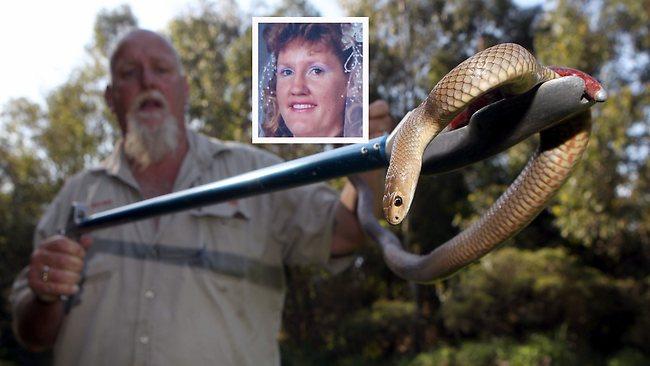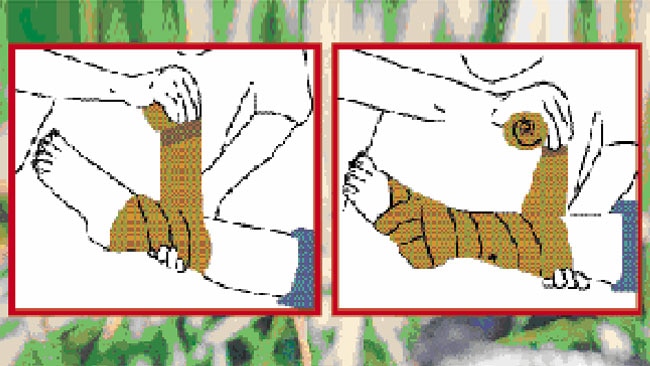Warning of high deadly snake numbers as woman dies from snakebites at Wheatvale near Warwick
QUEENSLANDERS have been warned of high numbers of deadly eastern brown snakes this summer after a woman died from a snake bite in the state's southwest.

News
Don't miss out on the headlines from News. Followed categories will be added to My News.
QUEENSLANDERS have been warned of high numbers of deadly eastern brown snakes this summer after a woman died from a snake bite in the state's southwest.
Scientists and snake handlers yesterday said the dangerous predators were breeding in high numbers and moving into urban areas following two good wet seasons.
Brisbane snake catcher Geoff Jacobs (main picture) said he was removing two to three dangerous snakes a day from Brisbane homes and buildings.
Narelle Pails, 43, had been working in her garden at Wheatvale near Warwick on Wednesday night when she was bitten several times by the snake.
Paramedics were called to the property at 4.50pm but Ms Pails, (pictured) a nurse at Warwick Hospital, was pronounced dead three hours later surrounded by her husband Paul, son Nicholas, 15, family and colleagues.
On average, two to three Australians die each year from snake bite, with eastern browns accounting for about half of the deaths.
It is not known what type of snake killed Ms Pails.
Yesterday the southern Queensland town of Warwick was in shock over Ms Pails' sudden death.
Ms Pails had picked up her husband Paul from work and son from school and they arrived home together before she went out to her garden.
She called out to her son from the garden and showed him the bite on her leg before going into a cardiac arrest.
Her aunt Margaret Shelley said Ms Pails was an exceptional woman and a dedicated mother of Nicholas and Emma, 18, who was out of town with her university studies.
"Everyone's just devastated," Ms Shelley said. "They are in shock. It's unbelievable.
"She was exceptional, loved by everyone she worked with - all the nurses and doctors.
"She was a local woman through and through, she was born here, got married here."
The snake is understood to have bitten into Ms Pails's blood vessel, depositing venom directly into the bloodstream, which would have killed her within minutes.
She was bitten several times through her trousers but the type of snake has not yet been released.
A Queensland Police Service spokesman said officers from Stanthorpe were asked to transport a second vial of antivenene from Stanthorpe Hospital to Warwick Hospital.
But Queensland Health director-general Tony O'Connell said Warwick Hospital had 14 vials of antivenene on hand, more than enough to treat the woman.
"If snake venom gets into the bloodstream straight away, rather than just being deposited in the muscles, then it's a much more difficult challenge," said Dr O'Connell, a former intensive care specialist.
Scientists and snake handlers yesterday warned Brisbane residents to be on the lookout for snakes with more breeding and moving into urban areas.
Queensland Museum Curator of reptiles Patrick Couper said after two heavy wet seasons rats, mice and other wildlife had bred-up providing extensive food sources for predators such as snakes.
He said the result was snakes would also be breeding in high numbers.
Brisbane snake catcher Geoff Jacobs said people living in the suburbs who plant flowering and fruiting trees also boosted wildlife numbers, with insects, crickets and birds all providing food for snakes.
Mr Jacobs said he removed two to three dangerous snakes a day from Brisbane homes and buildings.
"I pull eastern browns out of the CBD all the time," he said. "I've got a couple on the back seat right now."
On average two to three Australians die annually from snake bite, with eastern browns accounting for about half of those deaths.
Dr Couper said eastern browns were the most dangerous snake that Queenslanders might regularly encounter.
It carried powerful venom and was inclined to become aggressive if confronted.
Dr Couper said the Stanthorpe-Warwick region probably had fewer snakes than Brisbane.
Australian Institute of Health and Welfare statistics show 1750 Australians were hospitalised for snake bites in 2002-05 but only two to three die annually from snakes.


